NSW bushfires: Fire captain Beth Raines back fighting fires after fire claims her Mount Wilson home
Mount Wilson and Mount Irvine Fire captain Beth Raines was back fighting fires today after her home and one other were destroyed at Mount Wilson in Sunday’s blaze. Six more homes at Mount Tomah and over 10 buildings across Bilpin have also been destroyed.
NSW
Don't miss out on the headlines from NSW. Followed categories will be added to My News.
A NSW Rural Fire Captain is among the latest victims of the state’s horror bushfires with the experienced firefighter losing her home in a blaze believed to have been started by backburning.
Mount Wilson and Mount Irvine Fire captain Beth Raines was back fighting fires today while her neighbours said her home was one of two houses destroyed at Mount Wilson in Sunday’s blaze.
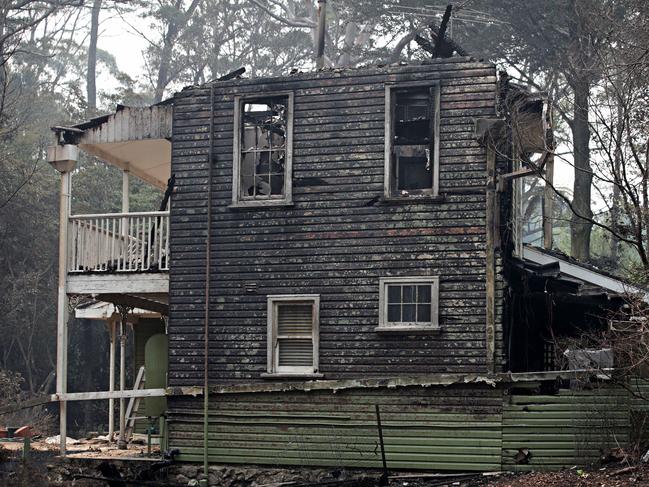
Another six houses are believed to have been lost at Mount Tomah and more than 10 buildings across Bilpin have been destroyed by the fire.
Ms Raines’ neighbour and deputy captain of the fire crew Barry Freeman said he was protecting his home as his captain’s home caught fire.
The homes on both sides of Mr Freeman’s property were destroyed.
“Beth’s home was on fire when I was fighting for my place,” he told The Daily Telegraph.
“It is unfortunate that the Captain was out doing her job when she lost her home. “
“Today again she is out there doing her job. She is a special person.”
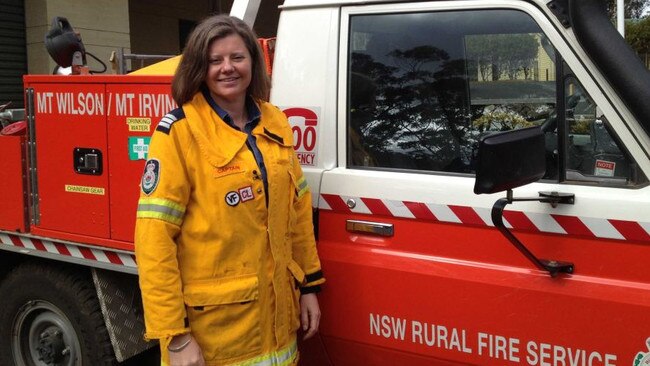
Mr Freeman said the backburning had been under control until the wind changed and the fire jumped across Mill Rd.
“The backburning was done properly but the weather conditions changed, it got a run on and there was no stopping it,” he said.
“I was protecting houses further down the road, I had just finished on Mill Rd and then got the message that homes were being impacted.”
“I shot back here and just in time as (the fire truck) which was fighting the fire here had just ran out of water, and we had a full tank.”
“I was able to deploy our fire truck and use that up in 5-10 minutes.”
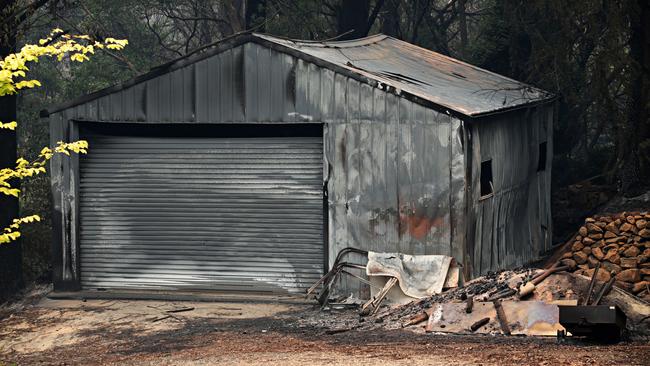
He then used his own water tank and a small pump to save his home alongside three other crew members.
The backburning was part of an operation to try and contain the sprawling Gospers Mountain fire – which has burned 380,000 hectares.
The Gospers Mountain fire stretches from the Lithgow in the west, through the Hawkesbury and towards the Central Coast in the east.
It was at “watch and act” alert level on Monday afternoon having been downgraded from emergency on Sunday.
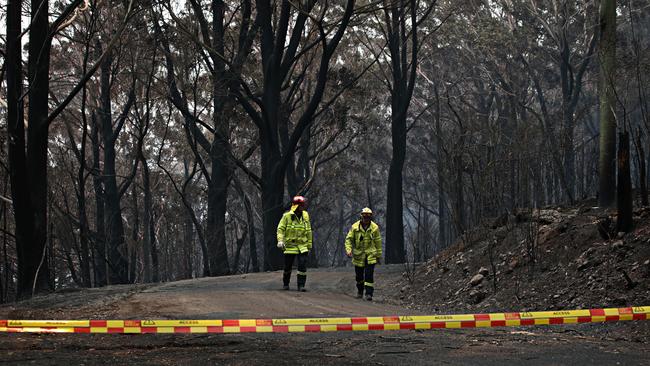
The RFS said the backburning losses were “absolutely unfortunate” but such operations were critical to help contain the vast fire before hotter conditions arrive later this week.
“If we don’t (backburn) then there’s nothing to stop this fire, and there’s heavily residential areas that it will look towards moving towards over the next days and weeks,” the spokeswoman added.
The mega-blaze jumped containment lines on Sunday ravaging several Blue Mountains suburbs north west of Sydney after the Gospers Mountain.
The inferno has also torn through parts of the heritage-listed Blue Mountains Botanic Gardens.
The Rural Fire Service on Monday confirmed that backburning over the weekend spurred the fires, which have damaged around 20 homes.
“Some of our own members appear to have suffered some damage or loss to properties as well,” RFS Commissioner Shane Fitzsimmons said.
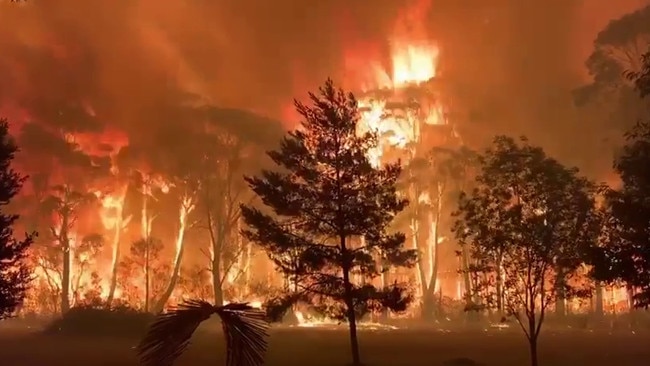
Blue Mountains Mayor Mark Greenhill on Monday morning said the reports of property loss and “unprecedented” conditions were a sign of “difficult weeks ahead.”
An emergency warning was issued by the NSW Rural Fire Service for Mount Wilson, Mount Irvine, Mount Tomah, Berambing and Bilpin on Sunday night with residents told to take shelter.
Ferocious fire columns up to 17m high wreaked havoc on the area as fire crews worked through the night to finally reduce activity to a watch and act level this morning.
The fire this morning crossed the Bells Line of road, placing more homes in the path of destruction.
The Gospers Mountain blaze which is almost 380,000 hectares in size in the Wollemi National Park has been burning since October 26.
On Sunday afternoon it crossed Bowen Creek, south of Mount Wilson and began creating spot fires ahead of the main fire front. One home was seen engulfed in flames while several shed and outlying buildings were lost at Mount Tomah.
NSW Rural Fire Service Commissioner Shane Fitzsimmons said the full extent of the damage is being assessed by specialist teams.
I can never get enough of visiting our beautiful Blue Mountains Botanic Gardens in Mount Tomah. The team do such amazing work. @BlueMountainsBG @RBGSydney @TexanInOz @BrettSumm @cbbmuse pic.twitter.com/hKpmYCmlUw
— Denise Ora (@bgcpsydney) October 16, 2019
The Blue Mountains Botanic Garden is one of the properties ravaged by the fire, with staff on Monday morning confirming that damage to parts of the garden is “significant.”
The gardens are closed due to the fires and staff say they are still assessing the full extent of the damage.
“Thankfully, most of the Garden’s Living Collection along with the main buildings are safe at the moment,” staff said.
The garden will remain closed for at least another week, according to staff.
Here was the view earlier today near to where we live in Katoomba.@p_hannam @bencubby, I think we may soon need to declare a state of emergency in the Blue Mountains.
— Jon Dee (JonDee.com) (@JonDeeOz) December 15, 2019
If we were Sydney, I guess it would have already been declared. Time for action pls @GladysB @Matt_KeanMP pic.twitter.com/BuquBAbicB
The news comes as firefighters prepare for a difficult week with hot and dry conditions sparking severe fire danger across most of the state today.
More than 120 fires are currently burning on the state’s east coast and almost half are out of control.
Total fire bans are in place across five districts including the Far North Coast, Central Ranges, New England, Northern Slopes and North Western NSW.
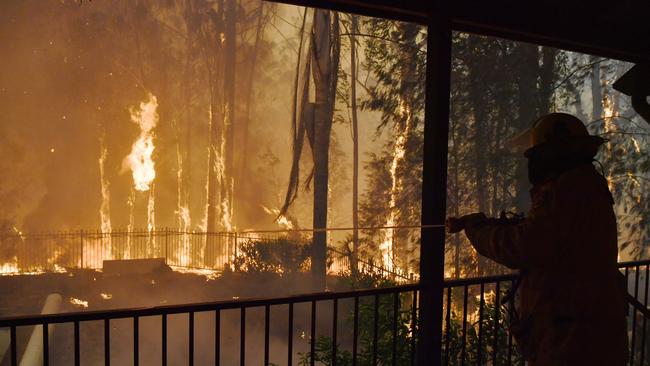
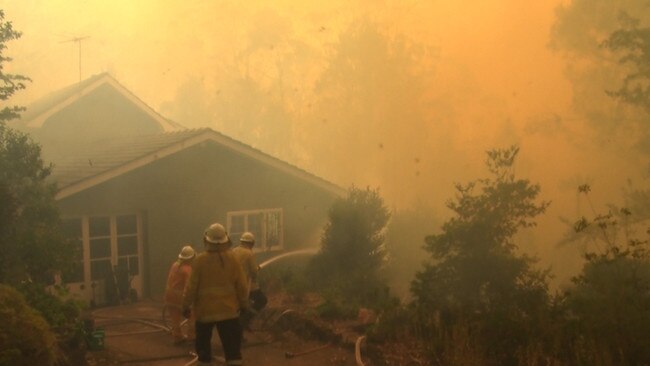
Sydney will swelter through a heatwave later in the week with temperatures set to push into the high 30s in Sydney and suburbs in the west set to nudge 44C.
Northwest and south westerly winds on Thursday afternoon will create difficult conditions for fire crew.
Already 724 homes, 49 facilities and 1582 outbuildings have been destroyed so far this fire season. Six people have died and 2.7 million hectares have been scorched.
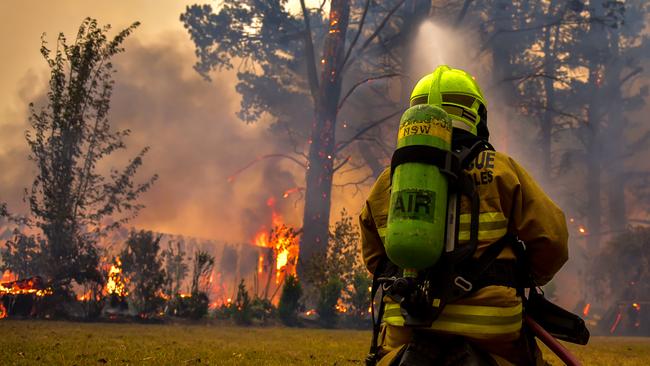
The RFS has warned the fire season could be extended by two months, as many of the 104 fires burning across the state will need drenching rain to extinguish.
The bush is so dry it would take 150mm of widespread, drenching rain — equivalent to Two-and-a-half times more rain than Sydney has seen since October — to return to normal moisture levels.

